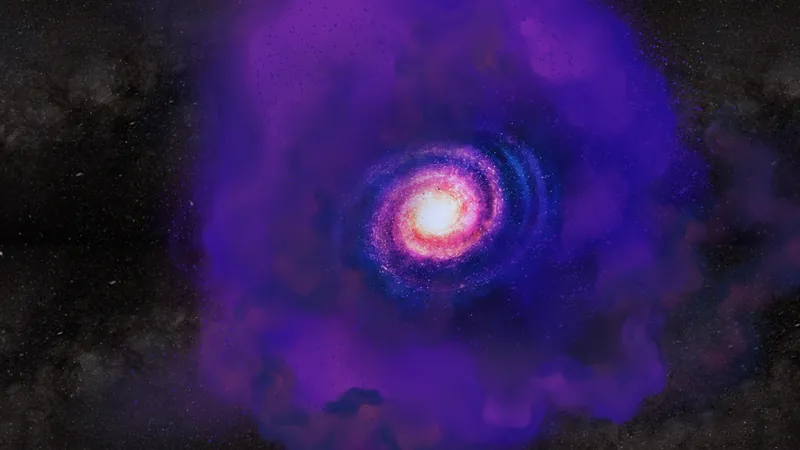
Could Dark Matter Halos Roam the Universe Like Cosmic Easter Eggs?
2025-04-14
Author: Sarah
The Mystery of Dark Matter Halos
Scientists have long been fascinated by dark matter, the elusive substance believed to make up around 85% of the universe's mass. A new line of research is flipping the script, questioning whether dark matter halos can exist independently of galaxies—imagine these halos as hollow cosmic Easter eggs wandering through space!
The Connection Between Galaxies and Dark Matter
Traditionally, the formation of galaxies has been linked to dark matter, which creates gravitational wells that attract gas and dust, leading to star formation. However, Ethan Nadler, a computational astrophysicist at UC San Diego, proposes the possibility of dark matter halos that do not host galaxies at all.
Discovering Star-Free Halos
Nadler's research began when he calculated the critical mass needed for a dark matter halo to form stars. Previously, it was thought that this mass should be at least between 100 million and 1 billion solar masses. Nadler, however, has identified a new lower limit, suggesting that starless dark halos could be more common than previously believed.
By considering the cooling of hydrogen molecules instead of just simple hydrogen atoms, he discovered that stars could form in halos as small as 1 million solar masses within a billion years after the Big Bang—much smaller than earlier assumptions.
Gravitational Influences of Invisible Halos
Despite their lack of visible stars, these 'dark' dark matter halos would still exert a gravitational influence on their surroundings. This means they could shape the gravitational dynamics of the universe significantly. As Nadler explains, detecting these halos remains a challenge due to their invisible nature.
The Quest for Detection
To find these elusive halos, scientists rely on gravitational lensing, a phenomenon predicted by Einstein. When light from a distant source passes near a massive object—the 'gravitational lens'—its path bends, causing distortions that can hint at otherwise invisible masses.
With new data coming from advanced telescopes like the James Webb Space Telescope, researchers are optimistic about pinpointing these dark halos, as this decade may bring new revelations in our understanding of cosmic structures.
Implications for Cosmology
The existence of galaxy-less dark matter halos could challenge current cosmological models, particularly the widely accepted Lambda Cold Dark Matter model. If these halos don't exist, it may indicate that dark matter behaves differently on smaller scales, opening up discussions on alternative models.
Nadler's findings not only deepen our understanding of dark matter but also provide critical insights into galaxy formation itself—one of the universe's most fundamental questions.




 Brasil (PT)
Brasil (PT)
 Canada (EN)
Canada (EN)
 Chile (ES)
Chile (ES)
 Česko (CS)
Česko (CS)
 대한민국 (KO)
대한민국 (KO)
 España (ES)
España (ES)
 France (FR)
France (FR)
 Hong Kong (EN)
Hong Kong (EN)
 Italia (IT)
Italia (IT)
 日本 (JA)
日本 (JA)
 Magyarország (HU)
Magyarország (HU)
 Norge (NO)
Norge (NO)
 Polska (PL)
Polska (PL)
 Schweiz (DE)
Schweiz (DE)
 Singapore (EN)
Singapore (EN)
 Sverige (SV)
Sverige (SV)
 Suomi (FI)
Suomi (FI)
 Türkiye (TR)
Türkiye (TR)
 الإمارات العربية المتحدة (AR)
الإمارات العربية المتحدة (AR)